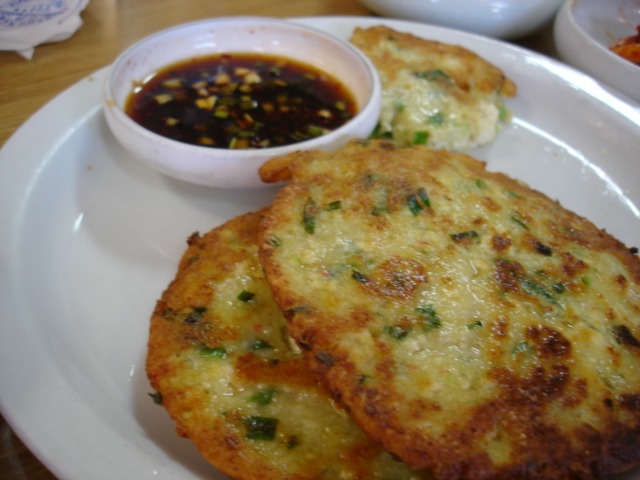Banchan (pronounced “Bon-chon”) is the term for Korean side dishes, a feature in Korean dining that is sure to delightfully surprise a visitor to the peninsula, whether in a restaurant or a home setting. Apart from the main course, there are at least a half dozen of these gracing the table in small portions, enhancing the meal with different tastes and textures.
Diners may choose as many or as few dishes as they like, and they are refilled immediately once the serving bowl is empty. Whether they are spicy vegetables or stir-fried noodles, these side dishes provide a taste that is distinctly Korean, giving the mouth a sensation of visiting different regions at the same time. And best of all, many restaurants serve them for free!
Here are 10 popular tasty banchan you can encounter in most Korean meals:
Japchae - glass noodles stir-fried in sesame oil and soy sauce with chopped vegetables. Japchae may also be a meal in itself. Made from sweet potatoes, these noodles become translucent when cooked, with a chewy consistency.
Oi Sobaegi - cucumbers stuffed with a paste made from Korean red pepper, scallion, ginger, and garlic. Diners can expect a light, cooling crunch, followed by a burst of spice and a tickling series of bubbles in the mouth.
Kimchi - an essential condiment in Korean dining, these are vegetables fermented for months in vinegar, red chili peppers, and salt. Kimchi not only goes with every Korean meal, but serves as a foundation for soups, and gives off a spicy and sour flavor. The most well-known variety is baechu kimchi, which is made from napa cabbage.
Jeon - pancake-like dishes that mix poultry, seafood, sliced meats, or vegetables with flour batter or coated with egg batter then deep-fried in oil. The crunchiness of the pancake contrasts with the chewiness of the added ingredient to the satisfaction of the diner. There is a sweet dessert variety called hwajeon, which means “flower jeon”. Jeon is an important dish during jesasang (ancestor worship) and janchi (festival).
Manul Changachi – pickled garlic, which gives off a crunchy, salty, and spicy effect in the mouth. The cloves can also be sliced into thin discs and used to flavor rice and other dishes.
Gaeran Mari – rolled omelette, where an egg mix of green onions, garlic and peppers are spread thin on a large pan, folded, and cut into half-inch wide pieces.
Changjorim – soy-braised beef and peppers where the meat is simmered to tenderness while chilies give it a spicy kick. Due to the saltiness of the dish, it is usually eaten in small amounts.
Kongjabam – a sweet and nutty side dish where seasoned black beans are cooked with soy sauce, sugar, and sesame oil.
Jjim – dishes made by steaming or boiling meat, poultry and seafood which are marinated in sauce or soup. Kalbi Jjim (Korean braised beef short ribs) is one form of jjim, where beef short ribs are simmered in a sweet-salty broth until the meat is practically falling off the bone.
Namul – vegetables seasoned with sesame oil, vinegar, salt, garlic, green onions, chili peppers, and soy sauce. Broccoli is often seasoned in sesame oil and sprinkled with a few sesame seeds when served as banchan.
One of the best ways to experience banchan is through a Korean barbecue. The common setup is a grill, pieces of raw pork slices, lettuce leaves, and the side dishes. The process is to fry the pork on the grill, then place it on the lettuce. Add your choice of banchan, fold the leaf, and munch on the newly-formed lettuce sandwich. The best part about this is combining different side dishes with each new sandwich, creating a different mouth experience every time. Banchan is also meant to be shared, enhancing the communal feel of the Korean dinner table.
















No comments:
Post a Comment